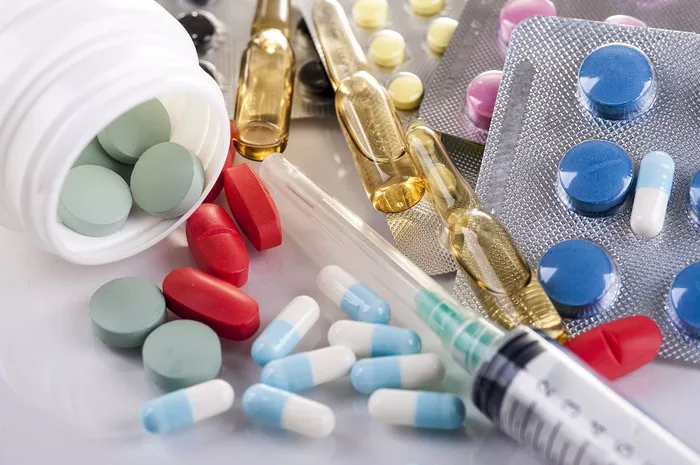1. Metformin
Metformin is often considered the first-line medication for the treatment of type 2 diabetes. It belongs to the class of drugs known as biguanides and works by decreasing the amount of glucose produced by the liver and improving the body’s sensitivity to insulin. Metformin does not increase insulin levels in the body and is not associated with weight gain, making it a preferred choice for many patients.
One of the significant benefits of metformin is its low risk of hypoglycemia, which is a potentially dangerous drop in blood sugar levels. Additionally, metformin has been shown to offer cardiovascular benefits, including a reduction in the risk of heart attacks and strokes.
Common side effects of metformin may include gastrointestinal symptoms such as nausea, diarrhea, and abdominal discomfort. These side effects can often be minimized by taking the medication with meals or by starting with a low dose and gradually increasing it over time.
2. Sulfonylureas
Sulfonylureas are another class of medications commonly used in the management of type 2 diabetes. Examples include glyburide, glipizide, and glimepiride. Sulfonylureas work by stimulating the pancreas to release more insulin, thereby helping to lower blood sugar levels.
Sulfonylureas are generally effective at reducing blood sugar levels, but they do carry a risk of hypoglycemia, especially in patients with impaired kidney function or those taking other medications that can lower blood sugar. They are also associated with weight gain, which may be a concern for some patients.
Because sulfonylureas can cause hypoglycemia, it is essential for patients taking these medications to monitor their blood sugar levels regularly and to be aware of the signs and symptoms of low blood sugar. Dosing adjustments may be necessary based on changes in diet, exercise, or other medications.
3. DPP-4 Inhibitors
Dipeptidyl peptidase-4 (DPP-4) inhibitors are a relatively newer class of medications used in the treatment of type 2 diabetes. Examples include sitagliptin, saxagliptin, and linagliptin. DPP-4 inhibitors work by increasing the levels of incretin hormones in the body, which stimulate the release of insulin and inhibit the production of glucagon, a hormone that raises blood sugar levels.
One of the advantages of DPP-4 inhibitors is that they have a low risk of hypoglycemia and are weight-neutral, meaning they are unlikely to cause weight gain. They are also available in convenient once-daily dosing formulations.
Common side effects of DPP-4 inhibitors may include upper respiratory tract infections, headaches, and nasopharyngitis. These side effects are generally mild and transient.
4. GLP-1 Receptor Agonists
Glucagon-like peptide-1 (GLP-1) receptor agonists are another class of medications used in the management of type 2 diabetes. Examples include exenatide, liraglutide, and dulaglutide. GLP-1 receptor agonists work by mimicking the effects of incretin hormones, which stimulate insulin secretion, inhibit glucagon secretion, and slow gastric emptying.
GLP-1 receptor agonists have been shown to be effective at lowering blood sugar levels, reducing body weight, and offering cardiovascular benefits, including a reduction in the risk of heart attacks and strokes. They are available in both short-acting formulations for daily injection and long-acting formulations for weekly injection.
Common side effects of GLP-1 receptor agonists may include nausea, vomiting, diarrhea, and injection site reactions. These side effects tend to improve over time and can often be managed with dose adjustments or supportive care.
5. SGLT2 Inhibitors
Sodium-glucose cotransporter-2 (SGLT2) inhibitors are a class of medications that work by blocking the reabsorption of glucose by the kidneys, thereby increasing the excretion of glucose in the urine. Examples include canagliflozin, dapagliflozin, and empagliflozin.
SGLT2 inhibitors have been shown to lower blood sugar levels, reduce body weight, and offer cardiovascular and renal benefits, including a reduction in the risk of heart failure and kidney disease progression. They are available in once-daily oral formulations.
Common side effects of SGLT2 inhibitors may include urinary tract infections, genital yeast infections, and an increased risk of dehydration and low blood pressure, particularly in older adults. Patients taking SGLT2 inhibitors should be advised to drink plenty of fluids and to monitor their blood pressure regularly.
See also:Can People With Type 2 Diabetes Eat Honey?
Conclusion
Several medications are available for the treatment of type 2 diabetes, each with its own mechanism of action, benefits, and side effects. The selection of medication should be individualized based on factors such as the patient’s age, comorbidities, preferences, and cost considerations. A comprehensive approach to diabetes management, including lifestyle modifications such as diet, exercise, and weight loss, in addition to pharmacotherapy, is essential for achieving optimal outcomes and reducing the risk of complications. Close monitoring and regular follow-up with a healthcare provider are crucial for ensuring safe and effective diabetes management.
Related topics:
What Is The Best Diet For Type 2 Diabetes?

























